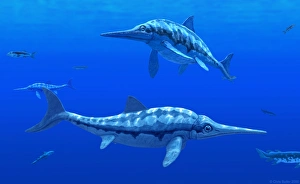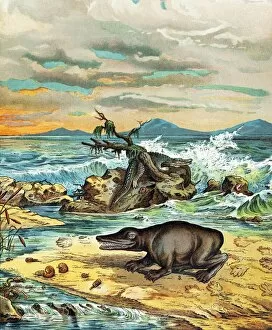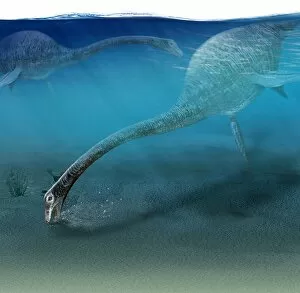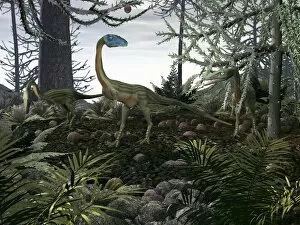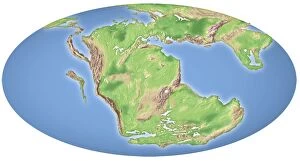Triassic Collection (page 14)
The Triassic period, a fascinating era in Earth's history, witnessed significant geological events and the emergence of unique life forms
All Professionally Made to Order for Quick Shipping
The Triassic period, a fascinating era in Earth's history, witnessed significant geological events and the emergence of unique life forms. As continents shifted due to continental drift, the European Alps took shape, as depicted in a captivating lithograph from 1897. A mesmerizing map showcases the arrangement of continents and seas during the Upper Triassic epoch. In this ancient time, extraordinary creatures roamed both land and sea. The mighty Plesiosaur ruled the oceans with its long neck and powerful flippers. On land, evidence of their existence can be found in the distinctive Cheirotherium footprint imprinted on prehistoric soil. The remnants of petrified wood stand as silent witnesses to bygone forests that flourished millions of years ago. These fossilized remains offer glimpses into an ecosystem vastly different from our own. Amongst these extinct beings was the Nothosaurus, which thrived during the mid-Triassic period. Its presence reminds us of how life has evolved over countless millennia. Another remarkable creature was Ceratodus latissimus—an extinct sarcopterygiian fish that inhabited ancient waters. Its fossils provide valuable insights into aquatic ecosystems during this era. Traveling across time zones brings us to Route 66's historic sign within Petrified Forest National Park in Arizona, USA—a testament to nature's ability to preserve organic matter through petrification processes. Meanwhile, amidst breathtaking peaks like Westliche Kaminspitze and Kemacher Spitze in Tyrol, Austria—visible from Hafelekar cable car station—we are reminded of how landscapes have transformed since Triassic times. Closer to home lies Hilbre Island off West Kirby in Wirral UK—a site where Sherwood Sandstone outcrops reveal intricate fluvial cross-bedding patterns formed by river deposition over millions of years—an awe-inspiring sight captured just last January. Lastly, we encounter Elginia mirabilis, an extinct pareiasaur that once roamed the Earth.







